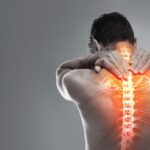Introduction
People go to diet clinics to seek healthier options and practices concerning their weight loss as a way of living. However, substantial knowledge of body composition is important in these prospective environments, excluding simple weight indicators. This paper aims to discuss the body composition primarily focusing on muscle mass and fat percentage while existing in and for Weight Loss Clinic.
Differentiating Weight and Body Composition
Weight: The Numbers Game
Weight on the other hand is universal and can be measured in pounds or kilograms and denote the sum total of tissue in the body. It is a good general measure that can be used in evaluating total body weight although it is a very rough measure of one’s fitness and health.
Body Composition: A Deeper Dive
Body composition, however, goes a notch higher in that it seeks to compare and contrast various body structures in terms of muscle mass, fat mass, bone density, and water content. Being that weight is quantitative, body composition analysis is more informational as it provides one with specifics of their composition.
The Importance of Muscle Mass
Muscle: The Metabolic Engine
Muscle is an important component of metabolism because it is an active metabolically tissue which burns calories even when the individual is not actively involved in any activity. Therefore, one could associate greater muscle mass with greater basal metabolic rate (BMR), that would enable more efficient calorie burning in the process.
Functional Significance
In addition to metabolism, the muscle tissue plays an important role in the human body to provide strength, physical activity, and general functional ability. In clinical settings, it is significantly important to retain or even build up the muscle mass as this will contribute to the continued weight change and weight maintenance.
Understanding Fat Percentage
Fat: Balancing Act
Some fat content in the body is good as it is useful for insulation, hormone production, and energy reserves, but any more than necessary is unhealthy and is associated with obesity and its effects which include heart diseases and diabetes, among others. Measuring fat percentage helps track and evaluate effectiveness of treatment or lifestyle changes, thus helping in adjustment of interventions as and when required.
Optimizing Fat Loss
This is because in weight loss clinic the emphasis is put on losing body fat and maintaining or even building muscle mass Camp & Raymond, 2018 Weight loss and nutrition can therefore be targeted effectively in an effort to positively impact body composition and reduce obesity-related diseases.
Methods for Measuring Body Composition
DEXA: The Gold Standard
DEXA scans involve obtaining density of bones as well as fat and lean trays distribution measurements. Despite being widely recommended; DEXA scans can be expensive and may also need patented machines.
Accessible Alternatives
Bioelectrical Impedance Analysis or BIA, skinfeld callipers, Air Displacement Plethysmography or ADP and Hydrostatic Weighing are other methods used to determine body composition. Each of these techniques is different with regard to cost, availability, and efficacy and is useful to the broad range of weight loss clinic.
Utilizing Body Composition Metrics for Progress Tracking
This can be done by targeting the loss results such as muscle mass and fat percentage which is important in the case of weight loss clinic since different individuals can have different body composition and therefore require different intervention. It is recommended that people make changes in their workout routines by incorporating resistance training, changes in diet as well as changes in other aspects of their life in order to maximize fat loss while making sure that the person does not lose their muscle mass in the process.
Conclusion
Therefore, weight loss clinic presenting improved lifestyles are critical in helping people address the weight issues as noted above. Defining muscle mass and fat proportion in addition to other factors is vital in these settings because it should be used for designing the right interventions and making sure that the progress being made is sustainable. Through the use of several approaches in the assessment of body composition and the use of these indicators, weight loss centers can help people to make the right life transformations as far as their health and reason behind their weight loss goals are concerned.

 Utilizing 3d printing technology in medical training
Utilizing 3d printing technology in medical training  Online THC A Flowers: Best Options Available
Online THC A Flowers: Best Options Available  Entails of terpenes in Delta 8 gummies
Entails of terpenes in Delta 8 gummies  Why are regular check-ups with a thyroid health specialist important?
Why are regular check-ups with a thyroid health specialist important?  Pain Down There? You Are Not Alone! Understanding Chronic Pelvic Pain
Pain Down There? You Are Not Alone! Understanding Chronic Pelvic Pain  What Allied Health Services are Available in Werribee for NDIS Participants?
What Allied Health Services are Available in Werribee for NDIS Participants?  What to Expect When Visiting a Pain Center for the First Time?
What to Expect When Visiting a Pain Center for the First Time?  Health benefits of using the best magic mushroom gummies
Health benefits of using the best magic mushroom gummies  Addiction is a complex and devastating disease.
Addiction is a complex and devastating disease. 
